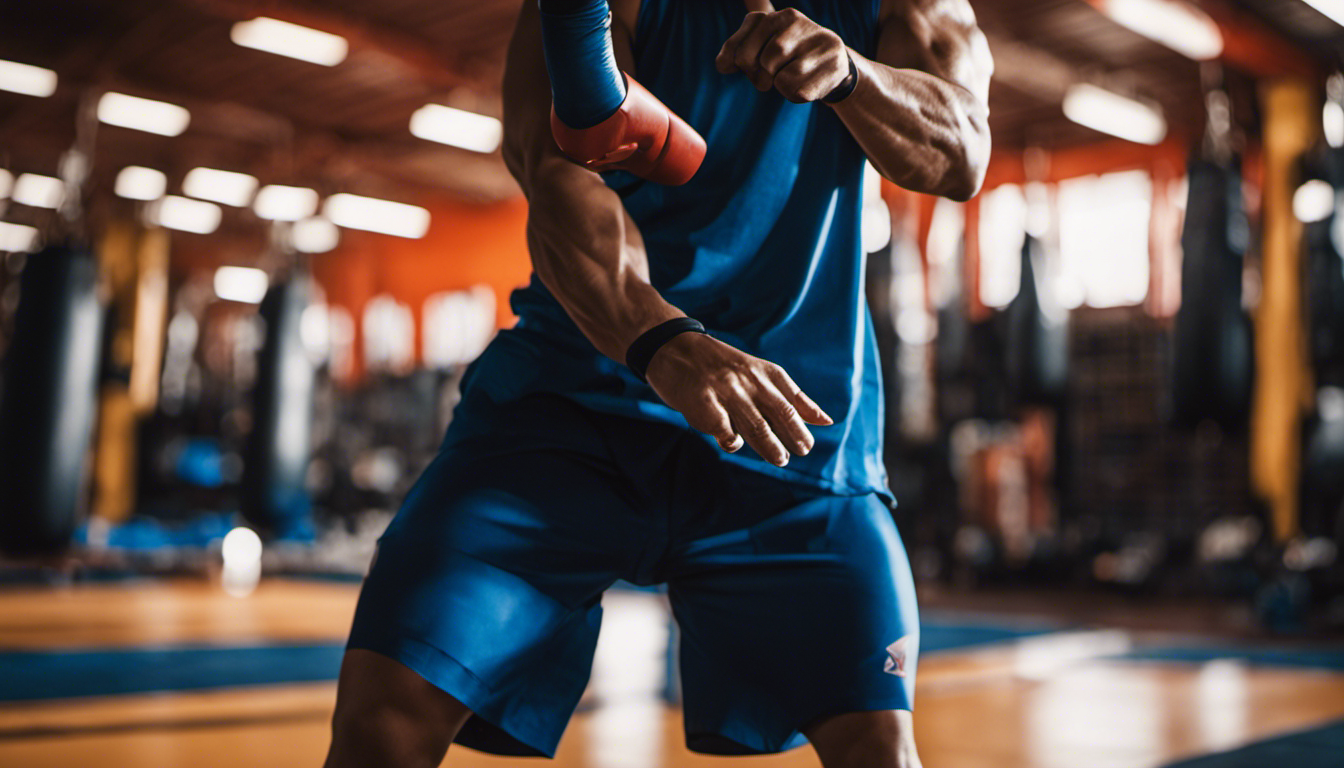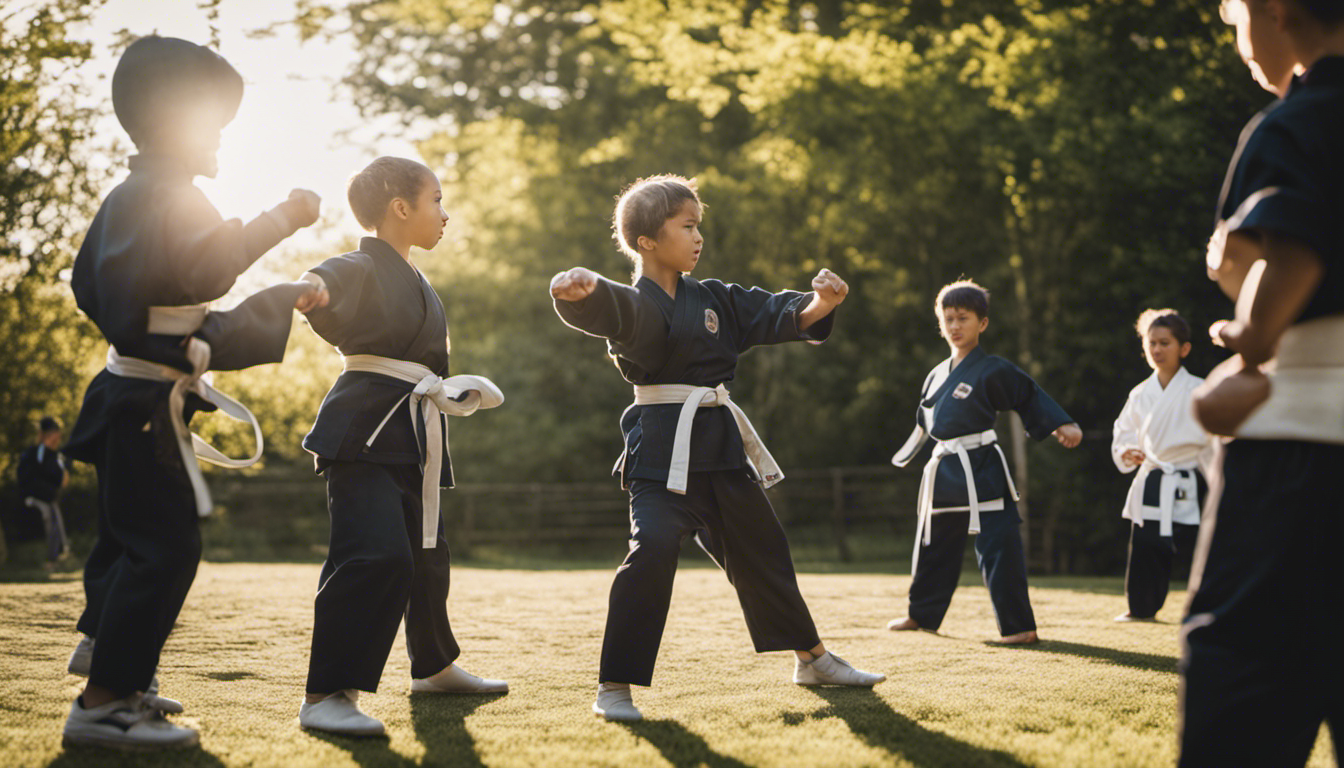As a martial artist, I know that conditioning and fitness are crucial for optimal performance. In this article, I will guide you through essential exercises to prepare your body for martial arts training.
We will explore the importance of:
- Flexibility
- Building strength and power
- Cardiovascular conditioning for endurance
- Injury prevention strategies
- Nutrition tips
By following these guidelines, you’ll be able to enhance your skills and achieve peak performance in the martial arts arena.
Let’s get started on this empowering journey!
Key Takeaways
- Stretching is important for increasing range of motion and reducing soreness.
- Plyometric training helps build strength and power for martial arts performance.
- High-Intensity Interval Training (HIIT) improves cardiovascular fitness and endurance.
- Proper nutrition and hydration are essential for optimal performance and injury prevention.
5 Essential Conditioning Exercises for Martial Arts Training
One of the essential conditioning exercises for martial arts training is running on a treadmill. Running not only helps improve cardiovascular endurance, but it also builds lower body strength and stamina.
To enhance your training further, incorporate plyometric exercises into your routine. Plyometrics involve explosive movements like jumping, bounding, and hopping that can help increase power and speed. These exercises work to develop fast-twitch muscle fibers, which are crucial for generating quick and powerful movements in martial arts.
Additionally, agility training should be a key component of your conditioning regimen. Agility drills such as ladder drills, cone drills, and shuttle runs can improve footwork, coordination, and reaction time.
The Importance of Flexibility in Martial Arts Preparation

To excel in martial arts, you need to focus on your flexibility and how it plays a crucial role in your preparation.
Stretching is key to improving flexibility and reaping its many benefits. First, stretching increases your range of motion, allowing you to execute kicks and punches with greater precision and power. It also helps prevent injuries by warming up your muscles and improving their elasticity.
Incorporating dynamic stretches like leg swings and arm circles into your warm-up routine can help improve blood flow, increase muscle activation, and prepare your body for the intense demands of martial arts training.
Additionally, static stretches held for 20-30 seconds after training sessions can aid in muscle recovery and reduce post-workout soreness. Remember, consistency is key – make stretching a regular part of your martial arts practice to enhance performance and maintain optimal physical condition.
Building Strength and Power for Martial Arts Performance
Building strength and power is essential for enhancing performance in martial arts. To truly excel in this discipline, it’s important to focus on building explosiveness through plyometric training.
Plyometrics involve explosive movements like jumps, bounds, and hops that engage your muscles and nervous system, improving your overall power output.
To start building explosiveness, incorporate exercises like box jumps, medicine ball throws, and explosive push-ups into your training routine. These exercises train your muscles to generate force rapidly, allowing you to deliver powerful strikes and execute lightning-fast takedowns.
Remember to always warm up properly before engaging in plyometric training to prevent injuries. Start with a light jog or dynamic stretching to activate your muscles and increase blood flow.
Cardiovascular Conditioning for Endurance in Martial Arts

When it comes to cardiovascular conditioning for endurance in martial arts, understanding optimal heart rate zones is essential. By training within these specific zones, you can maximize your performance and improve your overall endurance levels.
One effective approach to achieve this is by incorporating High-Intensity Interval Training (HIIT) into your martial arts workouts. HIIT not only helps increase your aerobic capacity but also enhances your anaerobic fitness, allowing you to sustain high-intensity movements during sparring or competitions.
Optimal Heart Rate Zones
You can monitor your heart rate to ensure you are training in the optimal heart rate zones for maximum fitness benefits. Heart rate monitoring is a crucial tool in aerobic training, allowing you to gauge the intensity of your workouts and make adjustments as needed. By staying within the recommended heart rate zones, you can optimize your cardiovascular conditioning and improve endurance for martial arts training.
Here is a table that illustrates the different heart rate zones and their corresponding benefits:
| Heart Rate Zone | Intensity Level | Benefits |
|---|---|---|
| Resting Zone | Very light | Active recovery, relaxation |
| Fat Burning Zone | Light to moderate | Increased fat burning, improved endurance |
| Aerobic Zone | Moderate to high | Improved cardiovascular fitness, increased stamina |
To effectively monitor your heart rate during aerobic training, wear a heart rate monitor or use a fitness tracker that provides real-time data. Remember to warm up properly before pushing yourself into the higher intensity zones. Training within these optimal heart rate zones will help you reach peak performance and achieve your martial arts goals.
HIIT for Martial Arts
To maximize your workout efficiency in martial arts, try incorporating HIIT exercises into your routine. HIIT, or High-Intensity Interval Training, offers a multitude of benefits that can help take your training to the next level.
Here are three key advantages of including HIIT workouts in your martial arts regimen:
-
Increased cardiovascular endurance: Picture yourself pushing through intense rounds of punching and kicking combinations, feeling your heart rate soar as you build stamina.
-
Improved explosive power: Imagine performing explosive movements like jump squats or burpees, activating fast-twitch muscle fibers and enhancing your ability to generate powerful strikes.
-
Enhanced calorie burning: Visualize sweating profusely during short bursts of intense exercise followed by brief recovery periods, effectively torching calories and promoting fat loss.
Incorporating HIIT into your martial arts training not only boosts physical performance but also adds variety and excitement to your workouts. So why wait? Start reaping the benefits of HIIT today!
Injury Prevention Strategies for Martial Arts Training

Make sure you warm up properly before starting your martial arts training to prevent injuries. Injury prevention techniques and warm-up exercises are essential for preparing your body for the intense physical demands of martial arts.
Begin with a dynamic warm-up, such as jogging or jumping jacks, to increase blood flow and raise your body temperature. Next, focus on stretching major muscle groups to improve flexibility and reduce the risk of strains or tears.
Incorporate movements that mimic the actions you’ll perform during training, like lunges or arm circles, to activate specific muscles and joints. Don’t forget to include balance drills and core exercises to enhance stability and control.
Nutrition and Hydration Tips for Optimal Martial Arts Performance

Maintaining proper nutrition and hydration levels is crucial for optimal performance in martial arts. As a martial artist, I understand the importance of fueling my body with the right nutrients and staying hydrated to enhance my strength, endurance, and focus.
Here are some nutrition tips and hydration strategies that can help you take your training to the next level:
-
Fuel your body with balanced meals: Incorporate lean proteins, complex carbohydrates, and healthy fats into your diet to provide sustained energy throughout your training sessions.
-
Stay hydrated: Drink water before, during, and after your workouts to prevent dehydration. Aim to drink at least 8 cups (64 ounces) of water per day.
-
Include electrolytes: Replenish electrolytes lost through sweat by consuming foods or drinks rich in potassium, sodium, magnesium, and calcium.
Frequently Asked Questions
How Long Should Each Conditioning Exercise Be Performed for During Martial Arts Training?
Each conditioning exercise should be performed for the optimal length of time to maximize its benefits for martial arts training. By focusing on the duration of each exercise, you can enhance your performance and achieve your goals more effectively.
Can Flexibility Training Alone Improve Martial Arts Performance?
Flexibility training alone can improve martial arts performance by increasing range of motion and preventing injuries. However, it has limitations such as not developing strength or technique. To maximize performance, combine flexibility training with other conditioning exercises.
What Are Some Specific Exercises for Building Strength and Power in Martial Arts?
To build strength and power in martial arts, incorporate plyometric training exercises like box jumps and medicine ball throws. Resistance training with weights or resistance bands will also help increase muscular strength and explosiveness.
How Often Should Cardiovascular Conditioning Exercises Be Performed for Optimal Endurance in Martial Arts?
To achieve optimal endurance in martial arts, it’s crucial to perform cardiovascular conditioning exercises regularly. However, don’t forget the importance of rest and recovery to prevent overtraining and maintain peak performance levels.
Are There Any Specific Nutrition and Hydration Recommendations for Martial Arts Training?
For optimal performance in martial arts training, it is important to follow specific nutrition recommendations and hydration guidelines. These will provide the necessary fuel and hydration needed for endurance and recovery during intense training sessions.
Conclusion
In conclusion, conditioning and fitness are crucial for preparing for martial arts training. By incorporating the five essential exercises, focusing on flexibility, building strength and power, maintaining cardiovascular conditioning, implementing injury prevention strategies, and following proper nutrition and hydration tips, you can optimize your performance in martial arts.
Remember to stay disciplined and dedicated to your training regimen. With determination and hard work, you will achieve greatness in the martial arts arena.
So get out there, train hard, and never give up on your goals!

